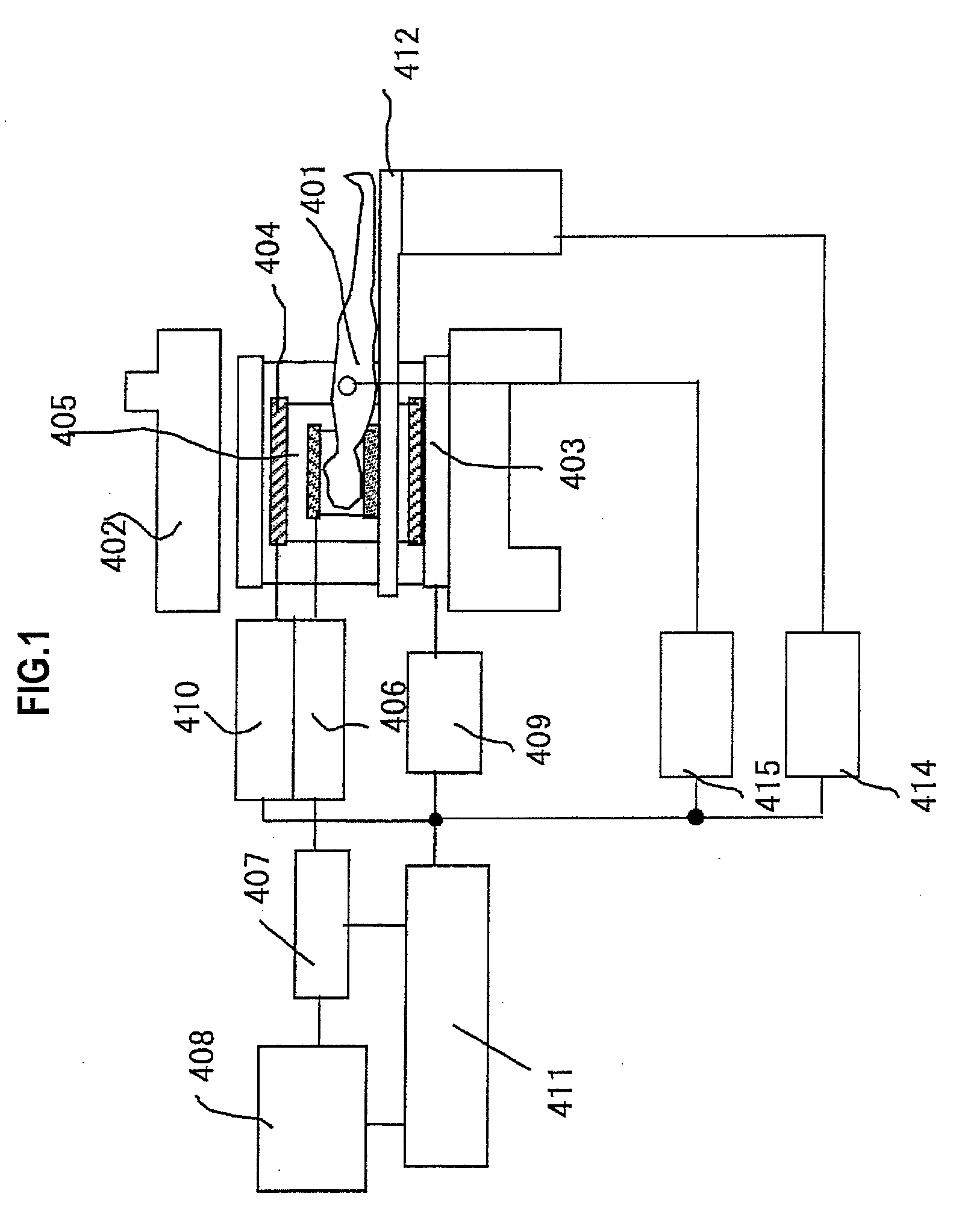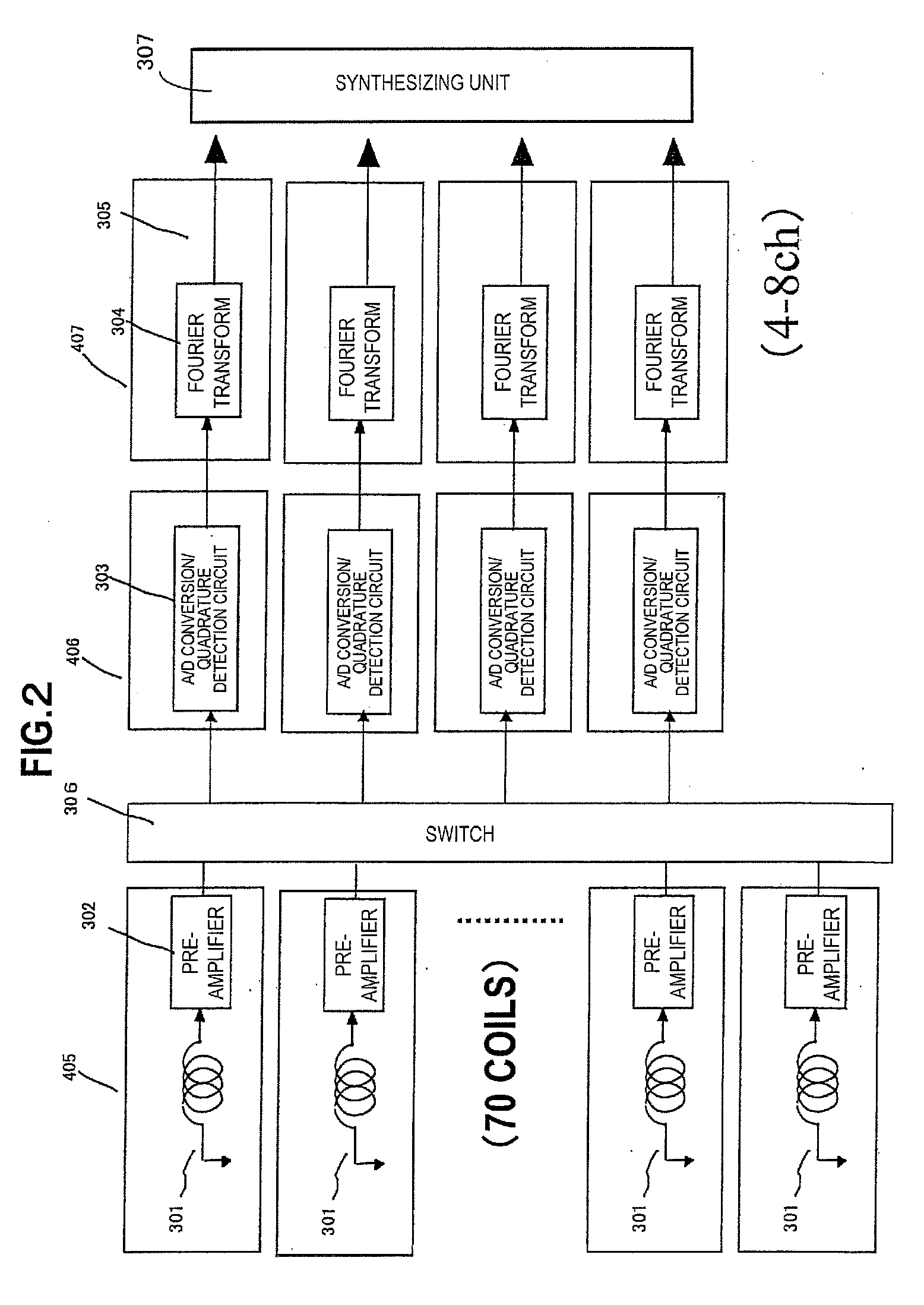Magnetic resonance imaging apparatus and magnetic resonance imaging method
a magnetic resonance imaging and apparatus technology, applied in the field of magnetic resonance imaging apparatus, can solve the problems of difficult high speed computation, less practicality, and complex artifacts produced when the data is roughly obtained by parallel mri, so as to prevent the occurrence of reconstruction artifacts, reduce the number of measurements, and reduce the effect of sparse data sampling specifi
- Summary
- Abstract
- Description
- Claims
- Application Information
AI Technical Summary
Benefits of technology
Problems solved by technology
Method used
Image
Examples
first embodiment
[0024]The imaging sequence equipped in the MRI apparatus will be explained first. According to the present embodiment a radial scan is applied as a pulse sequence of non-Cartesian imaging. FIG. 3 shows a typical 2D radial scan gradient echo (GrE) sequence, as an example of imaging sequence. In this imaging sequence, an RF pulse 501, which is to excite nuclear spins comprising the tissue of a subject (normally, proton), is applied together with a slice encoding gradient magnetic field pulse 502, and then pre-pulses 504 and 506 and the gradient magnetic field pulses 505 and 507 are applied in a direction of two axes (directions G1 and G2). Then, the measurement is performed on the gradient echo signal 508, which reaches peak when the absolute value of the applied amount of pre-pulses becomes equals to that of the gradient magnetic field pulse. Time from the excitation till the generation of echo signals, namely echo time TE is a parameter to determine image contrast and can be set arb...
second embodiment
[0062]The procedure for image re-construction according to the second embodiment is equal to the procedure according to the first embodiment shown in FIG. 1. Namely, non-orthogonal data is sampled by radial scan in Step 101, the non-orthogonal data is gridded on the Cartesian coordinate having a narrower field of view than that of a final view in step 102, Fourier transform is performed in step 103 and the operation for removing aliasing is performed on the data in the real space by using a sensitivity distribution of each element coil in step 107. The coil sensitivity distribution is calculated from the non-orthogonal data at the steps 104-106.
[0063]However, according to the present embodiment, when non-orthogonal data is measured by thinning spokes, the thinning is carried out not at even rate but at uneven rate or with the thinning rate in a direction higher than in other direction. An example of non-Cartesian sampling according to the present embodiment is shown in FIG. 10. (a) ...
third embodiment
[0073]This embodiment is different from the first and second embodiments in the point that non-orthogonal data is sampled using spiral scan but not radial scan. FIG. 11 (a) illustrates how the non-orthogonal data is measured by spiral scan, while FIG. 11 (b) and (c) illustrate the way of gridding of non-orthogonal data. FIG. 11 (d) shows non-orthogonal data measured by conventional spiral scan. It shows an example of single shot spiral, in which all data in the k-space are measured by repeating inversion of the gradient magnetic field after one excitation.
[0074]The spiral scan performs a pulse sequence to measure echo signals for every cycle of sign curve by continuously applying gradient magnetic field as a sign curve with changing (increasing) amplitudes in two axial directions (phase encoding direction and read-out direction). This makes the trajectory in the k-space expand spirally outside the k-space from the origin of the k-space, as shown in FIG. 11 (d). Here, the pitch of sp...
PUM
 Login to View More
Login to View More Abstract
Description
Claims
Application Information
 Login to View More
Login to View More - R&D
- Intellectual Property
- Life Sciences
- Materials
- Tech Scout
- Unparalleled Data Quality
- Higher Quality Content
- 60% Fewer Hallucinations
Browse by: Latest US Patents, China's latest patents, Technical Efficacy Thesaurus, Application Domain, Technology Topic, Popular Technical Reports.
© 2025 PatSnap. All rights reserved.Legal|Privacy policy|Modern Slavery Act Transparency Statement|Sitemap|About US| Contact US: help@patsnap.com



